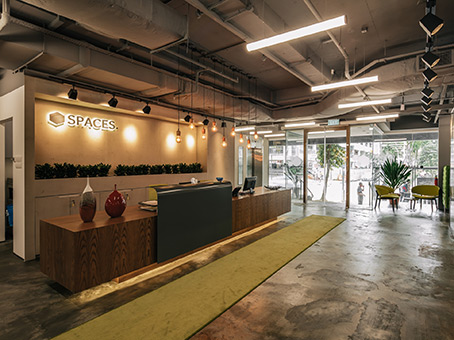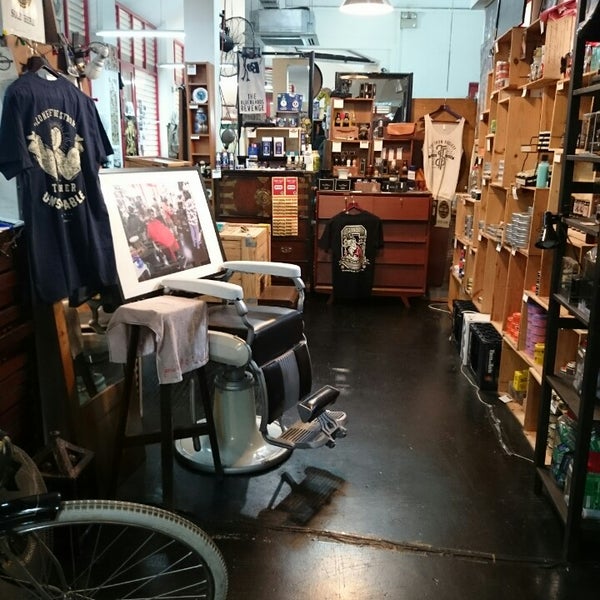Commercial properties are a hot area for real estate investors in Singapore. Commercial properties are exempt from the ABSD (Additional Buyer’s Stamp Duty), which can significantly impact returns for residential real estate investments. There are some intricacies to this process, so it’s important you familarise yourself with the process first before sinking a large sum of money into a commercial property. We’ve written this comprehensive guide to purchasing commercial properties in Singapore.
We’ll explain:
- What is a commercial property?
- What are the different types of commercial properties available?
- Can foreigners buy commercial properties in Singapore?
- Should I buy a commercial property as an individual, or via a company?
- What taxes do I have to pay when buying commercial properties?
- What are the key factors to consider before purchasing commercial properties in Singapore?
- What are the most frequently asked questions on commercial properties?
- How should I protect my commercial property from damage?
1. What is a commercial property?
A commercial property is a building designed for business purposes. It is not meant for residential use. Commercial properties are purchased to earn returns through both rental income and/or capital gains.
2. What are the different types of commercial properties available in Singapore?
There are 4 main types of commercial properties here:
Retail Commercial Property:
Examples include shopping malls, stores (e.g. clothing stores, convenience stores, electronic stores, etc.), F&B premises, salons, spas, gyms, shophouses, etc.
Industrial and Commercial Properties:
Examples include offices, warehouses, and factories.
These properties are classed into two sub-categories:
- B1 Commercial Property: Offices, warehouses
- B2 Commercial Property: Factories
Hotel Commercial Properties:
Examples include hotels and hostels of all types. These could be 2-star budget hostels all the way up to 5-star hotels.
Take note that hotels require specific permits to run. For starters, you will need a valid hotel licence from the Hotels Licensing Board (HLB) to operate a hotel. You will also need various permits from the Fire Safety Bureau, National Environment Agency (NEA), and Building ad Construction Authority (BCA).
Depending on how many services you offer in your hotel, you may need to apply for a fair number of permits. If your hotel has F&B outlets within the hotel that are run by you, you will also need Food and Beverage licenses for each eating establishment. If you have a bar, you will need a Public Entertainment License. If you offer massage services, you’ll need a Massage Parlour License.
Parking Lots:
You can purchase car park lots. Singapore does not have strata-titled parking lots. This means you can’t just buy a few individual lots for investment. Rather, you have to buy the entire parking lot. This means you should set aside at least a few million dollars if you’re considering investing in a lot, given high land prices in Singapore.
3. Can foreigners buy commercial properties in Singapore?
Yes, foreigners can certainly purchase commercial properties here.
In Singapore, there are some restrictions for foreigners who wish to purchase residential properties. For example, foreigners can generally only buy non-landed private homes (i.e. condominiums). Foreigners can only buy landed residential properties subject to governmental approval. However, there are no such restrictions for commercial properties. Foreigners can buy landed commercial properties without having to apply for government approval.
Under the Residential Property Act, foreigners can buy the following commercial properties:
- Shophouses
- Industrial and commercial properties (e.g. retail spaces, factories, warehouses, etc.)
- Hotels
Can a Permanent Resident (PR) buy commercial property in Singapore?
Yes. See above – there are no restrictions for PRs investing in commercial properties here.
Can a foreign company buy commercial property in Singapore?
Yes. If you have a company that’s registered outside of Singapore (e.g. a US-based LLC, a British Virgin Islands, company, etc.), you can use this company to purchase commercial property here. There are no restrictions. You can buy retail shops, shophouses, factories, warehouses, hotels, etc.
4. Should I buy a commercial property as an individual, or through a company?
It can be advantageous to consider purchasing commercial properties through a corporate entity, rather than buying it as a private individual.
Here are some key benefits of buying commercial properties via a company:
i. Limitation of liability
If you rent your commercial space out, tenants can hold you liable for negligence in maintaining your property. For instance, if you neglect to properly maintain fire suppression systems, and a fire breaks out and destroys your tenant’s business and causes injuries, you can be sued for negligence. If you get sued as a private individual, almost all your personal property can be exposed to legal claims. This includes your house, your savings in your bank account, your car, your jewellery and clothes, and almost all other belongings.
However, if you were to purchase a commercial property via a company, then the limitation of liability would be capped at the assets that your company holds. Your personal assets would be kept separate from the company’s assets, which protects your private belongings from being claimed by aggressive litigants.
ii. Lower taxes
Depending on your income bracket, corporate taxes can be lower than personal taxes in Singapore. Buying a commercial property through a local Singapore company can therefore reduce your tax burden.
When operating a commercial property via a company, you can also reduce your taxable rental income via valid claims for business-related expenses, such as property upkeep costs.
If your company is GST-registered (you can voluntarily register for GST!) you can claim back the 7% GST that you pay on commercial properties, subject to certain relatively straightforward conditions laid out by IRAS (Inland Revenue Authority of Singapore). You cannot claim back GST if you buy a commercial property as an individual. If you buy a $2 million commercial property with GST included, that means you can claim back a whopping $140,000!
iii. Ease of ownership transfer
It is easier for companies to transfer asset ownership compared to individuals.
iv. Potential exemption from Total Debt Servicing Ratio (TDSR) limitations
If you buy a commercial property as an individual, you will be subject to the Total Debt Servicing Ratio (TDSR). The TSDR in Singapore is 60%. This means that you can only take on a loan that results in annual mortgage payments that are 60% or less of your yearly income.
For example, if your annual income is $100,000, you can only take on a loan with a mortgage of up to $60,000/year. This basically limits the type and size of commercial properties that you can invest in, unless you have a particularly high income.
However, corporate buyers who can demonstrate strong financials (e.g. positive cash flow, clean balance sheet, good operating history, etc.) can be exempted from the TDSR. This allows you to purchase more expensive commercial properties that can potentially get you higher returns.
5. What taxes do I have to pay when buying commercial properties?
Annual property tax: 10%/year
Commercial property owners pay a flat rate of 10% of the annual value (AV). The AV is calculated based on the gross annual rent if your property were to be rented out.
Property taxes for commercial properties purchased for investment tend to be lower than residential properties whose owners don’t live in them. For such residential properties, the tax rates can be as high as 20% if you don’t live in the unit and rent it out. This is another plus point for investing in commercial properties.
Capital gains tax: 0%
Singapore does not have a capital gains tax. That means when you sell your commercial property, you do not need to pay any capital gains taxes. This is in stark contrast to other countries like the US, which depending on the specific state, can levy capital gains taxes of up to 37% on real estate sales.
This helps real estate investors maximise their gains when buying and selling commercial real estate in Singapore.
6. Key factors to consider when buying a commercial property in Singapore:
Factor 1: What type of commercial property should I buy?
This is the first question that most investors will ask themselves. Should I buy a retail commercial property in a CBD-area shopping mall? How about an HDB shophouse in a heartland district? Or perhaps I should invest in an industrial warehouse? Different types of commercial properties will have varying expected rates of return, different price points, and their own unique strengths and risk factors.
For instance, let’s take a look at purchasing heritage shophouses. These shophouses are quite limited in supply. They command a premium over other shophouses, and over other commercial properties in general, because they are officially conserved by the government. Many of these shophouses are also located in the Central Business District (CBD), which makes them popular choices to rent amongst small companies and trendy startups. Areas like Chinatown and Telok Ayer are lined with these conserved heritage shophouses, many of which are rented out for princely sums to eateries, yoga studios, startups, and other businesses.
Since these shophouses are in high demand, you can usually expect to earn relatively good rental yields. With their conserved status, limited supply, and popularity amongst investors, such shophouses also hold their value well. Depending on your entry price point, investors typically can also typically expect to earn attractive capital gains.
However, the quantum (total purchase price) for such heritage shophouses are high. For instance, a 5,000 square foot heritage shophouse in an area like Chinatown can easily fetch $10 million or more. In 2020, The Business Times reported on a trio of shophouses, sporting about 10,000 square feet of built-up space, that went up for sale for $30 million.
Also, depending on the specific shophouse you intend to purchase, there may be restrictions on their usage according to urban zoning plans. Some shophouses are designated for commercial use only, while others can be both residential and commercial.
It’s important to properly evaluate the pros and cons of each type of commercial property. It’s a good idea to do up a comparison table of prices for different types of commercial properties, and see what the historical and projected returns are for each type of commercial property. If you already know which type of commercial property you want to buy, make sure to do comparisons of prices-per-square foot for a few properties in the areas you’re interested in. This helps you establish a market price, which will allow you to analyse whether the property you’re intending to purchase is trading for below or above market value. Don’t jump into a purchase before you’ve done lots of homework!
Factor 2: Location, location, location. Where is your property located?
Location will have a vital role in determining the returns you make from your commercial property. It will also influence the kinds of leaseholds that your commercial properties will have.
Here are some key factors you’ll want to bear in mind when evaluating the location of a commercial property:
- Transportation: How easy is it to access the MRT? Is it within walking distance? If not, , are there nearby bus stops, and how far is the nearest stop? Does the property have on-site parking? If not, how far is the closest car park, and is it easy to get parking spaces?
- Corner units: Commercial properties situated at corners of intersections (whether these are road intersections, or intersections in shopping malls) tend to be more valuable because more people will pass by the shop.
- Traffic: How many people will walk by the property on an average day? Is the property situated right by a busy street or road? Do lots of vehicles pass by the property every day? If so, you can command higher rentals because such properties have higher visibility.
- Surrounding developments: Is the property situated in a well-developed neighbourhood? Are there shopping malls, or office spaces, or lots of attractions nearby that will draw a natural amount of regular foot traffic? For instance, Paya Lebar Quarter is an integrated working-living-lifestyle hub that has offices, malls, eateries, and residences packed into one location, which draws large numbers of people there. Rental yields in such a location will therefore be high since commercial shops are in high demand. For example, if there’s an en bloc sale or if the government decides to redevelop the land, it could potentially affect human traffic and therefore also your business.
Factor 3: Can you change your commercial property’s intended use?
Commercial properties are zoned according to their intended use. Zoning rules are implemented by the URA (Urban Redevelopment Authority). If you purchase a commercial property and wish to change its intended use to something different from its original use, you may need to apply for planning permission from the URA first.
For example, let’s say you purchased a nice commercial retail shop unit. Instead of running it as a shop, you decide you want to convert the place into a commercial music school. You’ll need to first check with the URA whether the guidelines allow for this change in use. If not, you’ll need to apply for permission from the URA before you embark on your conversion project.
Factor 4: What’s the leasehold period?
Leaseholds for commercial properties typically range from 30 to 60 years. This is much shorter than that of residential properties, which range from 99 year leases to freehold properties.
New commercial property launches are usually 30 year leaseholds. This is in line with the government’s announcement of more commercial property sites with shorter tenures (and smaller lot sizes) being released for purchase. This helps make industrial sites more affordable for business owners in Singapore. It also gives flexibility for the government in terms of redevelopment of land
Factor 5: Can I get sufficient financing to purchase my commercial property?
Most buyers will apply for bank loans when buying their commercial property. The loan amount you can take out will be limited by your Total Debt Servicing Ratio (TDSR).
If you’re buying as an individual, the TSDR is capped at 60% of your monthly income. For instance, if your income is $10,000/month, then your maximum mortgage is $6,000/month.
If you’re buying through a company, your bank will evaluate your TDSR based on your company’s annual net operating income. Banks will also consider your company’s debt, if any.
Factor 6: Ensure you have sufficient cash to pay GST (Goods and Services Tax) on commercial properties
You have to pay GST (currently 7%) on the sale and lease of commercial properties in Singapore. Only sales/leases of residential properties are exempt from GST.
If you purchase a commercial property via a company that is GST-registered, you can claim the GST portion on the purchase. You can voluntarily register your company for GST if you wish to claim the GST back on commercial property purchases.
7. Frequently asked questions on purchasing commercial properties
i. Do I need to pay ABSD when buying commercial properties?
No. You do NOT have to pay ABSD when buying a commercial property. This applies even if you already own a residential property. This means you’ll save between 12% to 20% on ABSD, which is a huge amount for property purchases.
ii. Do I need to pay Seller’s Stamp Duty (SSD)?
No. You do NOT have to pay SSD for commercial properties, except when buying industrial properties. Industrial properties include factories and warehouses (basically buildings intended for industrial activity like manufacturing, storage, chemical refining, etc.). The SSD amount you have to pay depends on the number of years that you’ve owned the property before selling it (a.k.a. the “holding period”).
Here’s a breakdown of SSD rates:
Sellers’ Stamp Duty for Commercial Properties in Singapore | |
| Number of years you’ve owned the property before selling it (holding period) | SSD rate (based on sale price) |
| 1 year | 15% |
| 1-2 years | 10% |
| 2-3 years | 5% |
| Over 3 years | No SSD payable |
SSD encourages buyers to hold onto their properties for the longer-term, and discourages short-term flipping or rapid-fire speculative purchases.
iii. How much can I borrow to buy commercial properties?
You can take a bank loan of up to 80% of the loan-to-value (LTV). This is higher than residential properties, where loans are capped at 75% of the loan-to-value ratio.
You’ll need to fork out at least 20% of the down-payment in cash. Remember, you can’t touch your CPF money to pay for commercial properties.
LTVs can be lower than 80% if you are buying a commercial property strictly for investment purposes, without living in the property. For instance, if you purchase a warehouse, or a commercial shophouse (and you declare to the bank you won’t be living there), the bank may cap your LTV amount at less than 80%.
Also, interest rates on loans for commercial properties tend to be higher than loans for residential properties. This reflects the relatively higher risk that comes with purchasing commercial properties.
iv. Must I pay GST on commercial properties?
Yes. You have to pay 7% GST. You can’t use your bank loan to pay for the GST. It has to come from your own pocket.
This means that your minimum cash outlay will be around 27% (20% down-payment + 7% GST) of the property’s purchase price, if you buy a commercial property that has GST attached to it.
You may wish to consider purchasing a commercial property through a company. If you make a purchase made through companies that are GST-registered, you can claim back the GST portion of the purchase.
v. Can I use my CPF to finance the purchase of commercial properties?
No. You cannot use your CPF savings in your CPF account to pay for commercial properties.
CPF savings can only be used for residential properties.
vi. Where can I find data on commercial properties?
URA’s website has a list of useful data on commercial properties. You can view:
- Supply of commercial properties
- Major commercial projects to be launched
- Recent commercial projects launched each quarter
- Median rental prices
- Available office and retail space for rent
vii. How do I find upcoming commercial property land sites for sale?
Twice a year, the URA will announce Government Land Sales (GLS) sites that are up for sale. These GLS’ will contain a mix of both residential and commercial sites. The land will be sold via an open tender process.
viii. How long are the leaseholds for commercial properties?
Commercial properties usually have leases between 30 to 60 years. This is much shorter than residential properties, which have leases from 99 years all the way to freehold.
ix. Are there freehold commercial properties?
Yes. There does exist a small quantity of freehold and 999-year leasehold commercial properties in Singapore. However, many of such freehold commercial properties are usually not located within prime areas, which can affect your capital gain potential, and make it harder to find tenants to earn rent. The freehold commercial properties that are located within the CBD also command a significant premium relative to non-freehold commercial properties in the same area.
x. Can I buy a commercial property for residential use?
If your goal is to live in a commercial property, then your best choice is to purchase a commercial shophouse. This will have a retail space on the first floor that you can rent out for monthly income. It will also have a home on the second floor for you to live in.
Unfortunately, you cannot live in other types of commercial properties. For instance, you can’t buy a warehouse and then convert it into a massive loft residence. As much as that would exude massive amounts of hipster cool, that would violate zoning regulations. If you want a home, you’ll have to either invest in a shophouse, or purchase a residential unit.
xi. Do commercial properties have higher rental yields than residential properties?
On average, commercial properties in Singapore earn a rental yield of around 5%/year. This is higher compared to residential properties, which usually earn around 2% to 3%/year.
8. How should I protect my commercial property against fire, water damage, and other physical damage?
Commercial properties in Singapore don’t come cheap. Many investors rely on their commercial properties to provide a steady source of income to grow their wealth, or to tide them over through retirement. Since you’ve invested so much of your hard-earned money into your property, you need to make sure that your investment doesn’t go up in smoke – literally.
Commercial property insurance protects your property against an extremely wide variety of damage, including but not limited to:
- Fire
- Explosions
- Certain types of water damage
- Lightning
- Sudden structural collapse
- …and much more









































